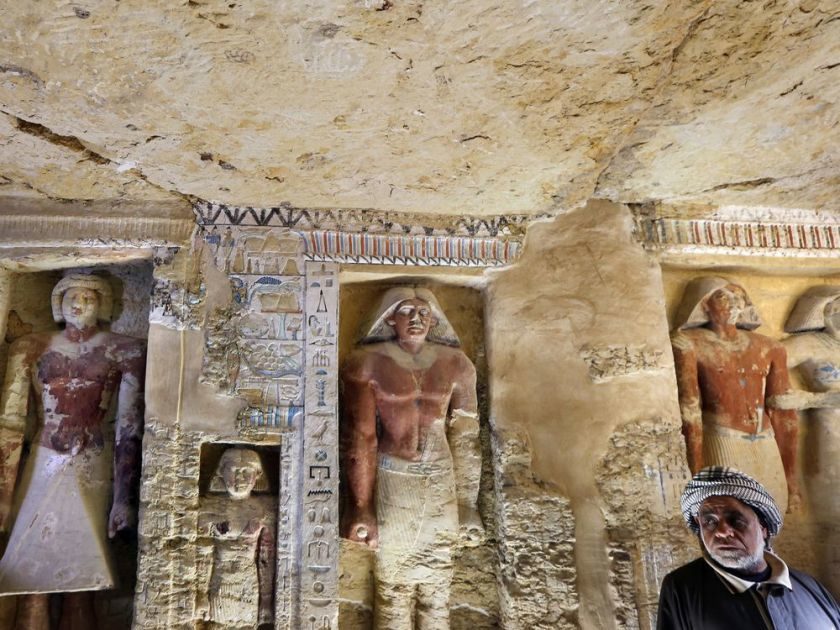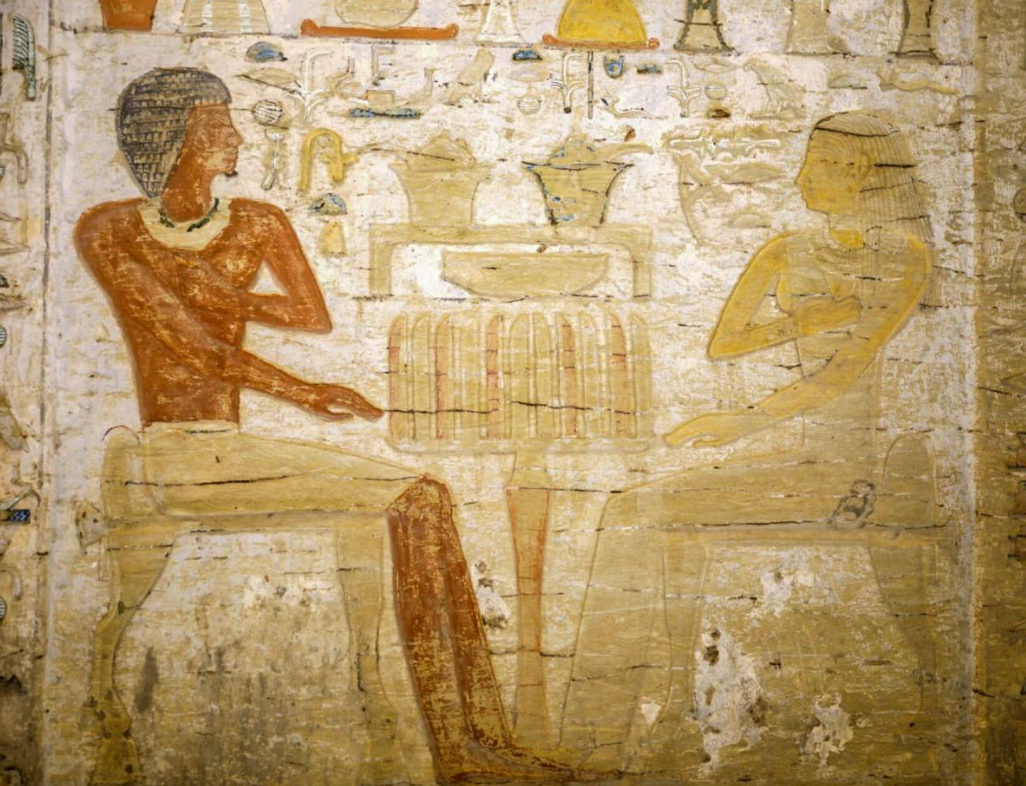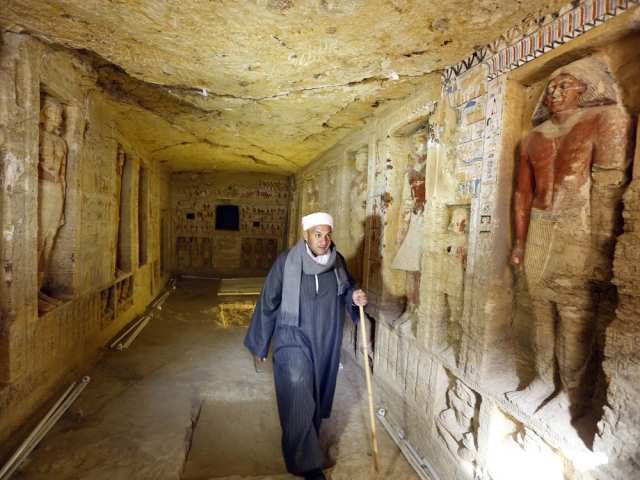
During Egypt's pyramid age, a well-connected man named Wahtye died and was laid to rest in the vast royal cemetery that now occupies the desert west of modern Cairo. His colorfully decorated tomb, apparently intact, has recently come to light some 16 feet (five meters) beneath the sand at the archaeological site known as Saqqara.
This burial is "one of a kind in the last decades," said Mostafa Waziri, secretary general of the Supreme Council of Antiquities, at a press conference that announced the discovery earlier today. "The color is almost intact even though the tomb is almost 4,400 years old."

The grave's rectangular gallery-measuring 33 feet (10 meters) wide north to south, 10 feet (three meters) east to west, and about ten feet tall-is covered in painted reliefs, sculptures, and inscriptions, all in remarkably good shape after so many centuries.
The reliefs depict Wahtye himself, his wife, Weret Ptah, and his mother, Merit Meen, as well as everyday scenes that include hunting, sailing, making offerings, and manufacturing goods such as pottery and funerary furniture. Large painted statues of the priest and his family fill 18 niches, while 26 smaller niches near the floor hold statues of an as yet unidentified person either standing or seated with legs crossed, as a scribe.

"This shaft should lead to a coffin or a sarcophagus of the owner of the tomb," said Waziri, indicating his best guess for the location of finds to come. Other shafts might hold the grave goods of the deceased.
The high priest's tomb lies along a ridge that has been only partly excavated. Even more discoveries may turn up when digging resumes there in January.






Comment: Archaeological discoveries like these in Egypt and elsewhere seem to be happening with greater regularity, and some are proving to be very insightful indeed: